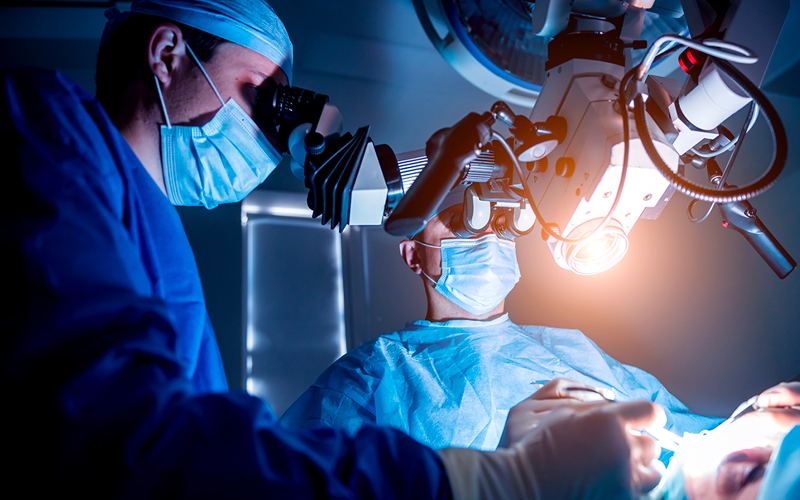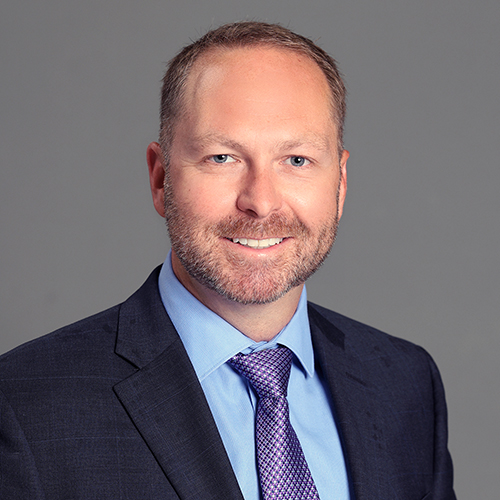The Health series is presented by AdventHealth

A Conversation with Neurosurgeon Jayson Neil, MD
When a person learns they may need brain or spine surgery, the initial response is often apprehension, perhaps because of preconceived notions based on a friend or family member’s experience years ago.
But brain and spine surgery have both come a long way in the last few decades. Medical and technological advances now allow for less invasive procedures with decreased risk and optimal benefits.
Jayson Neil, MD, FAANS, FCNS, neurosurgeon and medical director of neurosciences at AdventHealth, explains.
“It is natural to be hesitant when you are unsure or don’t have enough information. People can also be fearful of what they might hear, or they may make assumptions about what will happen,” Neil says. “It is for exactly those reasons that I encourage patients to meet with their provider or with a surgeon. There are so many options to address many of the problems people face. Most of those options are not surgical and many could improve a patient’s quality of life or extend it. If surgery is a choice or is recommended, there are often options that people may not know exist. Even the surgeries continue to change in dramatic ways with new research, medications, technologies, and therapies.”

How are today’s technological and medical advancements allowing neurosurgeries to be performed in ways that reduce risk, improve outcomes, and raise patient satisfaction?
Every neurosurgeon is required to do an entire year of research during their training, and most neurosurgeons are involved in many research projects and publications during this time. This dedication to research produces a massive and constant wave of innovation.
For example, we have been removing brain tumors for years. But now we have better methods for finding and resecting them, including special dyes that help the tumor glow under specific light settings on microscopes. We have a similar but separate dye for blood vessels. At AdventHealth Shawnee Mission, we not only have the most advanced microscopes but also a special type of surgeon-guided robotic 3D exoscope that allows visualization at unusual angles in a way that everyone in the operating room can see. All of this is combined with specialized software to recreate and map the patient’s head and brain in 3D to allow for less invasive and safer approaches and improved success in tumor resection. We have special therapies we can place in the tumor bed, and improved products to promote healing. At AdventHealth, we also have a new way to provide pinpoint high-dose radiation (radiosurgery) using MRI navigation.
As for spine surgery, AdventHealth recently purchased the most advanced intraoperative 3D CT scan imaging technology, which can be combined with the top spine robot to locate and treat patients using safer techniques and less invasive approaches. This allows people to have safer surgeries, less pain, and faster recoveries with fewer complications. Surgical hardware can be pre-planned so even if it is the same surgery as was done on a friend or family member a few years ago, the likelihood is that the actual technique, and therefore results, could be quite different. We are constantly striving to make sure the safest and best technology is available to our patients so that every surgery is better than what was done before.
Is surgery always the best option? What do you tell your patients?
Oftentimes, surgery is actually not the best option. There are certainly circumstances in which surgery is required and in those cases, we are trying to figure out which approach or size of surgery is best for each individual patient. But in most cases, we want to make sure we have exhausted all other options, working with talented physical therapists, skilled pain management specialists, medications, or good old-fashioned stretching, exercise, and time. We listen to our patients and try to tailor their treatment to them. They are the ones who ultimately make the decisions about their care. Our job is to provide education; then if they need surgery, we do our best to deliver the optimal outcome.
What is your patient care philosophy?
I treat patients like I would want to be treated or how I would want my family treated. I try to be helpful, clear, open minded, and to educate them. I don’t “beat around the bush,” and I always encourage the patient to make sure they are being cared for by someone they trust. It’s what I would want and it’s what they deserve.


